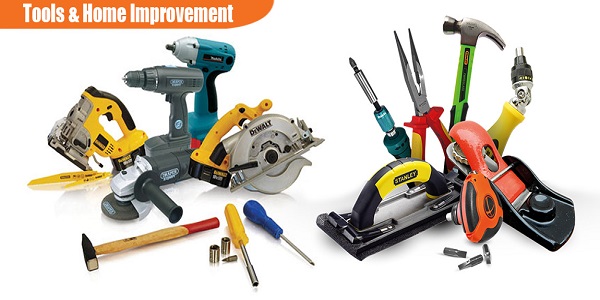Your miter saw isn’t cutting straight. It’s frustrating and impacts project quality.
Understanding why your miter saw isn’t cutting straight is crucial for achieving precise, clean cuts. Several factors may cause this issue, from blade alignment to the saw’s overall condition. A misaligned blade can skew your cuts, leaving them uneven or angled.
Sometimes, the fence or table may be out of square, affecting the cut’s accuracy. Regular maintenance and calibration can prevent these problems. You might need to check the blade, the fence, or even the motor for issues. Figuring out the cause can help you fix it and get back to making perfect cuts. Let’s explore common reasons and solutions to ensure your miter saw performs flawlessly.

Credit: www.reddit.com
Common Causes
Have you ever found yourself staring at a piece of wood, puzzled as to why your miter saw just won’t cut it straight? You’re not alone. Many DIY enthusiasts face this frustrating issue. Understanding the common causes can help you troubleshoot and solve the problem effectively. Let’s dive into some reasons behind this issue, so you can get back to creating precise and beautiful cuts.
Blade Issues
The blade is the heart of your miter saw, and if it’s faulty, precision suffers. A dull blade can be the culprit. It tends to tear through material rather than slice it cleanly, resulting in jagged cuts.
Inspect the teeth of your blade. Are they worn or damaged? A quick replacement might be all you need. Ensure the blade is the right type for your project. A mismatch can lead to inaccurate cuts.
Another often overlooked aspect is blade tightness. A loose blade can wobble during operation, skewing your cut lines. Tighten it regularly to maintain stability.
Fence Alignment
Think of the fence as your guide to a straight cut. If misaligned, it can lead you astray. Check if your fence is properly square with the table. This alignment is crucial for accuracy.
You might be wondering, how do you check alignment? Use a carpenter’s square to verify. Make adjustments if needed. This simple step can save you hours of frustration.
Remember that fences can shift over time, especially with frequent use. Regularly inspect and adjust them to ensure they remain true to their position. This keeps your cuts straight and your projects on track.
Have you encountered these issues? How did you tackle them? Share your experiences in the comments and let’s learn from each other!
Troubleshooting Blade Problems
Experiencing crooked cuts with your miter saw can be frustrating. Blade issues are often the culprit. Troubleshooting these problems can restore your saw’s precision. Let’s dive into blade-related concerns.
Inspecting The Blade
Begin by examining the blade closely. A bent blade can cause uneven cuts. Look for any visible warps or dents. Check the teeth for damage. Broken or dull teeth affect cutting accuracy. Clean the blade surface if dirty. Dust and debris can interfere with smooth operation. Make sure the blade is properly aligned. Misalignment leads to off-kilter cuts. Tighten any loose bolts or screws. Loose parts can alter blade position.
Replacing The Blade
If inspection reveals damage, a blade replacement may be necessary. Choose a high-quality replacement for optimal performance. Ensure the new blade matches your saw’s specifications. Incorrect size can cause cutting issues. Follow the manufacturer’s instructions for installation. Improper fitting may lead to further problems. After replacing, test the saw on scrap wood. Observe the cut to confirm blade precision. Regular blade replacement maintains cutting accuracy.
Checking Fence Alignment
Ensuring your miter saw cuts straight often involves checking the fence alignment. The fence guides the material and keeps it stable during cuts. Misalignment can cause crooked cuts and frustration. Regular checks are necessary to maintain precision. Let’s explore how to adjust and secure the fence effectively.
Adjusting The Fence
Begin by inspecting the fence for any visible misalignment. Use a square to check if the fence is perpendicular to the blade. Loosen the screws holding the fence in place. Adjust the fence until it aligns perfectly with the blade. Tighten the screws to secure your adjustments.
Test the alignment by cutting a piece of scrap wood. Check the cut for straightness. Repeat adjustments if necessary. Regular checks ensure the fence stays properly aligned.
Securing The Fence
Once the fence is aligned, securing it is crucial. Ensure all screws and bolts are tightly fastened. A loose fence can shift during cutting. This can cause inaccurate cuts and safety hazards.
Consider using clamps for added stability. Clamps hold the fence firmly in place. They prevent movement during operation. This ensures consistent accuracy in your cuts. Properly secured fences lead to better results and a safer work environment.
Table And Base Inspection
Ensuring your miter saw cuts straight starts with inspecting its table and base. These components are crucial for accuracy. A misaligned table or base can lead to cutting errors. Regular inspection helps maintain precision and prevent frustration during projects. Let’s dive into how to inspect these parts effectively.
Leveling The Table
The table must be perfectly level for accurate cuts. Use a spirit level to check its flatness. Place it across the table’s surface. Adjust until the bubble is centered. An uneven table can cause the saw blade to wobble. This results in crooked cuts. Tighten any loose screws or bolts. They can affect the table’s stability. A stable table ensures straight cuts every time.
Examining The Base
The base supports the miter saw. It must be sturdy and secure. Check for any wear or damage. A damaged base can misalign the saw blade. This leads to inaccurate cuts. Inspect the base for cracks or bends. Repair or replace any faulty parts. Ensure it sits flat on the floor. A stable base is key to cutting precision.
Consider the material and design of the base. Some bases have adjustable feet. Use them to stabilize the saw on uneven surfaces. This prevents tilting during operation. Stability is essential for straight cuts. A well-maintained base keeps your miter saw accurate and dependable.
Calibrating The Miter Gauge
Ensuring straight cuts on a miter saw often requires calibrating the miter gauge. Misalignment can cause uneven edges and inaccurate angles. Adjusting the gauge helps achieve precise cuts, enhancing the quality of your woodworking projects.
Calibrating the miter gauge is crucial if your miter saw isn’t cutting straight. Even the slightest misalignment can throw off your entire project. Taking the time to adjust your miter gauge ensures precision and saves you from unnecessary frustration.Setting The Angle
Begin by ensuring your miter saw is unplugged for safety. Adjust the miter gauge to the desired angle, often starting at 0 degrees for a straight cut. Tighten the gauge securely, as a loose setting can easily shift during use. Use a carpenter’s square to check the alignment. Place the square against the saw’s fence and the blade. You should see no gaps between the square and the blade. If you notice a gap, adjust the miter gauge slightly and re-tighten. Sometimes, it takes a couple of tries to get it just right. Patience is key here—precision will pay off in the long run.Testing Accuracy
After setting the angle, it’s time to test your adjustments. Make a test cut on a scrap piece of wood. Examine the cut for straightness and accuracy. Check the cut with a square. If it’s off, revisit your miter gauge settings. It might require small tweaks to achieve perfection. Consider marking your gauge for future reference once it’s correctly aligned. This simple step can save time on subsequent projects. Have you found other methods to ensure your cuts are straight? Sharing your experiences can help others facing the same issue. Calibrating your miter gauge might seem tedious, but it’s a game-changer for achieving precision in your woodworking projects.
Credit: m.youtube.com
Motor And Power Concerns
Dealing with a miter saw that doesn’t cut straight can be frustrating. Motor and power concerns might be the root of the issue. Understanding these problems can lead to a quick solution. Let’s dive into assessing the motor and checking the power supply.
Assessing Motor Health
The motor is the heart of your miter saw. A healthy motor ensures smooth and straight cuts. First, listen for unusual sounds. Grinding or whining noises can indicate motor problems. Overheating is another sign of motor distress. Feel the motor housing after use. If it’s too hot to touch, that’s a red flag. Check for visible wear and tear. Cracks or damages might affect performance. Regular maintenance can extend motor life. Clean the motor area frequently. Dust and debris can cause blockages.
Verifying Power Supply
Power supply issues can affect cutting precision. Check the power cord for any damage. Frayed or broken cords need immediate replacement. Ensure the power outlet is functioning. Try plugging another device to test it. Use a stable power source. Fluctuating power can lead to inconsistent cuts. Consider using a surge protector. It helps in maintaining steady power flow. Examine the saw’s power switch. A faulty switch might cause power interruptions. Replace it if necessary to ensure a steady operation.
Proper Cutting Techniques
Achieving precise cuts with your miter saw isn’t just about the tool itself; it’s also about mastering proper cutting techniques. Whether you’re a weekend warrior or a seasoned carpenter, fine-tuning your approach can make all the difference between a perfect cut and a frustratingly crooked one. Have you ever stood there, perplexed, wondering why your cuts aren’t straight despite your best efforts? Let’s dive into the nuances of these techniques, ensuring you get the best results every time.
Positioning The Material
The way you position your material on the miter saw can make or break your cut. Imagine you’re setting up a piece of wood. If it’s not firmly aligned against the saw’s fence, even the slightest shift can skew the cut angle. This is something I learned the hard way during a home renovation project. My cuts were slightly off, and it turned out I wasn’t securing the wood properly. Always double-check the alignment and ensure the material is flush against the fence.
Consider using clamps if your material is prone to movement. Clamps provide stability, ensuring the piece stays in place as you cut. If you’re working on longer pieces, support both ends to prevent sagging. This simple step can drastically improve your accuracy, leading to cleaner, straighter cuts.
Executing The Cut
Executing the cut with confidence is crucial. Approach the saw with a steady hand and firm grip, controlling the motion of the blade. Have you ever hesitated mid-cut, causing the blade to wobble? That’s a common culprit for crooked lines. Keep a consistent, smooth motion throughout the cut.
Before you start, ensure the blade is sharp. A dull blade can tear through material unevenly, leading to jagged edges. If your cuts are not straight, inspect the blade for wear and tear. Also, adjust the miter saw’s settings to match your desired angle precisely. This ensures that each cut is consistent, reducing the risk of discrepancies.
Focus on your technique as much as the tool itself. Are you applying too much pressure or going too fast? These small adjustments can significantly affect the outcome. Practice makes perfect; try a few test cuts to gauge your method and make necessary tweaks. With patience and attention to detail, you’ll master the art of cutting straight with your miter saw.
Maintenance Tips
Keeping your miter saw in top condition ensures straight and accurate cuts. Regular maintenance can prevent many common issues. Here are some essential tips to help your saw perform better.
Regular Cleaning
Dust and debris can affect cutting accuracy. Clean your miter saw after every use. Use a small brush to remove sawdust from the blade and base. Ensure no particles remain on moving parts. This prevents misalignment and keeps the saw running smoothly.
Lubrication Advice
Moving parts need lubrication to function properly. Apply a light oil to the pivot points and slide rails. This reduces friction and wear. Regular lubrication helps maintain precision in your cuts. Avoid using heavy oils, as they can attract dust.

Credit: www.flame-lb.com
Frequently Asked Questions
Why Are My Miter Cuts Not Straight?
Your miter cuts may not be straight due to misaligned saw blade, incorrect angle setting, or dull blade. Ensure your saw is calibrated properly. Check the blade’s sharpness and adjust the angle accurately for precise cuts. Secure the material firmly to avoid movement during cutting.
How To Make Your Miter Saw Cut Straight?
Align the miter saw blade with the cut line by adjusting the bevel and miter angles. Secure the material firmly. Check the saw fence for squareness and ensure the blade is sharp and clean. Use a speed square to verify accuracy before cutting.
Regularly maintain and calibrate the saw.
Why Is My Mitre Saw Not Accurate?
Your mitre saw might be inaccurate due to a misaligned blade or worn-out parts. Ensure the blade is properly aligned and check for any damage. Clean the saw and tighten loose components. Regular maintenance helps maintain precision. Consider professional calibration for optimal accuracy.
How To Realign A Mitre Saw?
To realign a mitre saw, unplug it first. Loosen the bevel adjustment and align the blade with the 0-degree mark. Tighten the bevel lock. Check the fence alignment using a square and adjust if necessary. Lastly, test with a scrap piece to ensure accuracy.
Conclusion
Finding your miter saw not cutting straight can be frustrating. Simple fixes often solve the problem. Check the blade alignment first. Ensure it’s sharp and clean. Verify the fence is straight. Tighten loose parts. Regular maintenance is key. Always follow the user manual.
With these steps, your cuts should improve. No more wonky angles. Just precise, straight lines. Remember, practice makes perfect. Keep your tools in top shape. Happy woodworking!


